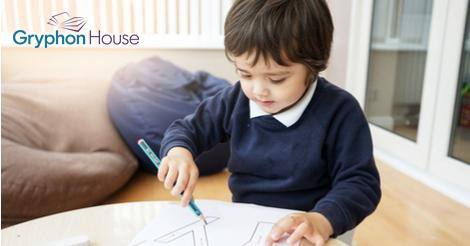Fine Motor Delay Warning Signs
November 13th, 2017 | 3 min. read

When children are young, there is a lot of talk about their motor skills. How are they developing? What can parents do to assist them? Are children developing their skills at the same pace as their peers? Motor skill development is crucial, as these skills are part of everything we do! Our ability to pick up a mug, turn a page, or use a fork depends on fine motor skills.
So what are they, exactly?
Motor skills help children to move and accomplish motion-based tasks. Gross motor skills are big movements like running or dancing, while fine motor skills usually just include movements to the hands and fingers.
Children’s fine motor skills begin developing from the moment they’re born, and continue to develop into elementary school. However, there are a few major milestones that children are expected to have reached by the time they start preschool. According to Christy Isbell in her book Mighty Fine Motor Fun, they are:
- Reach: Moving their arm forward to reach an object
- Grasp: Using their fingers to get an object into their hands
- Carry: Using their hand to move an object from one place to another place
- Release: Letting go of an object they hold in their hand
- In-Hand manipulation: Using their fingers to adjust an object inside her hand
- Bilateral Hand Use: Using their two hands together in an activity
Before entering preschool, children should be proficient in all of these tasks. But what if your child is almost four and you notice she still can’t carry her toys without employing her whole arms? This doesn’t mean that anything is wrong with her; she just needs a bit more practice. Children learn much of their motor skills from play with peers, but adults can contribute to that learning by showing young children how to do simple tasks.
Take, for example, the child mentioned above. She would be struggling with the “carry” skill, which means she needs to be shown how use her fingers and palms to lift and move objects. Simple toys that involve placing things into holes are good tools for teaching this skill. The parent or teacher can show the child how to do it by slowly wrapping their fingers around the ball/block, gripping it tightly, and then placing it into the receptacle, be that a basket, cup, or cut-out hole. Children struggling with fine motor movement need to see the mechanics at work, so make sure to emphasize how the fingers curve around the object.
Because motor skills are so foundational, it is important children are not behind on them when they enter preschool. Below are a few more activities to build your child’s fine motor skills.
Stamp Art
Objective: Children will improve grasp of small objects and increase finger strength
Materials:
- Paper
- Variety of stamps with small handles
- Washable inkpads
- Large washable markers
Activity:
- Provide paper, stamps, and markers for the child
- Demonstrate how to use a marker to color the stamp rather than using the inkpad
- Invite the child to explore different methods of using stamps to make art
- Talk with the child about their Stamp Art creation
Coin Match
Objective: The child will perform fine motor activities that require in-hand manipulation skills necessary for fine motor tasks
Materials:
- Variety of coins, including pennies, nickels, and quarters
- Small bowls or plastic containers
- Paper
- Black pen or marker
Activity:
- Trace around different-sized coins to make patterns. Keep the pattern very simple, such as quarter, penny, quarter, penny. Trace no more than 10 coins on each piece of paper
- Invite the child to sort pennies, nickels, and quarters, and place them in separate containers
- Give the child a coin pattern to replicate
- Encourage the child to select coins from the pre-sorted bowl and match them to their corresponding spots by size
- When the child is finished, place one coin into each container and then ask them to sort the coins back into the proper containers
Geoboards
Objective: The child will perform fine motor tasks that require finger strength and bilateral coordination
Materials:
- Geoboard (can be commercially bought or handmade using nails and a square piece of wood)
- Rubber bands of varying sizes
Activity:
- Invite the child to explore the Geoboard with the rubber bands
- Demonstrate the method of stretching a rubber band from one peg to the next. Form lines, shapes, or letters with the rubber bands
- Encourage the child to make their own lines, shapes, or letters on the Geoboard
Author(s)Christy Isbell
Ashleigh Craven has a decade and a half of diverse category experience from agency communications to athletic apparel to automotive to education, developing and executing communication strategies in both traditional and social media. She has supported national product launches and corporate events for the likes of Soffe, Buick, Chevrolet, Wake Forest University , Kaplan, and others. She has an BA from the University of Michigan in English and Communication Studies and an MA from Wake Forest University, where she focused her studies on argumentation and presidential rhetoric and speechwriting. She served as director of marketing for Gryphon House from 2017- 2020.
Topics: